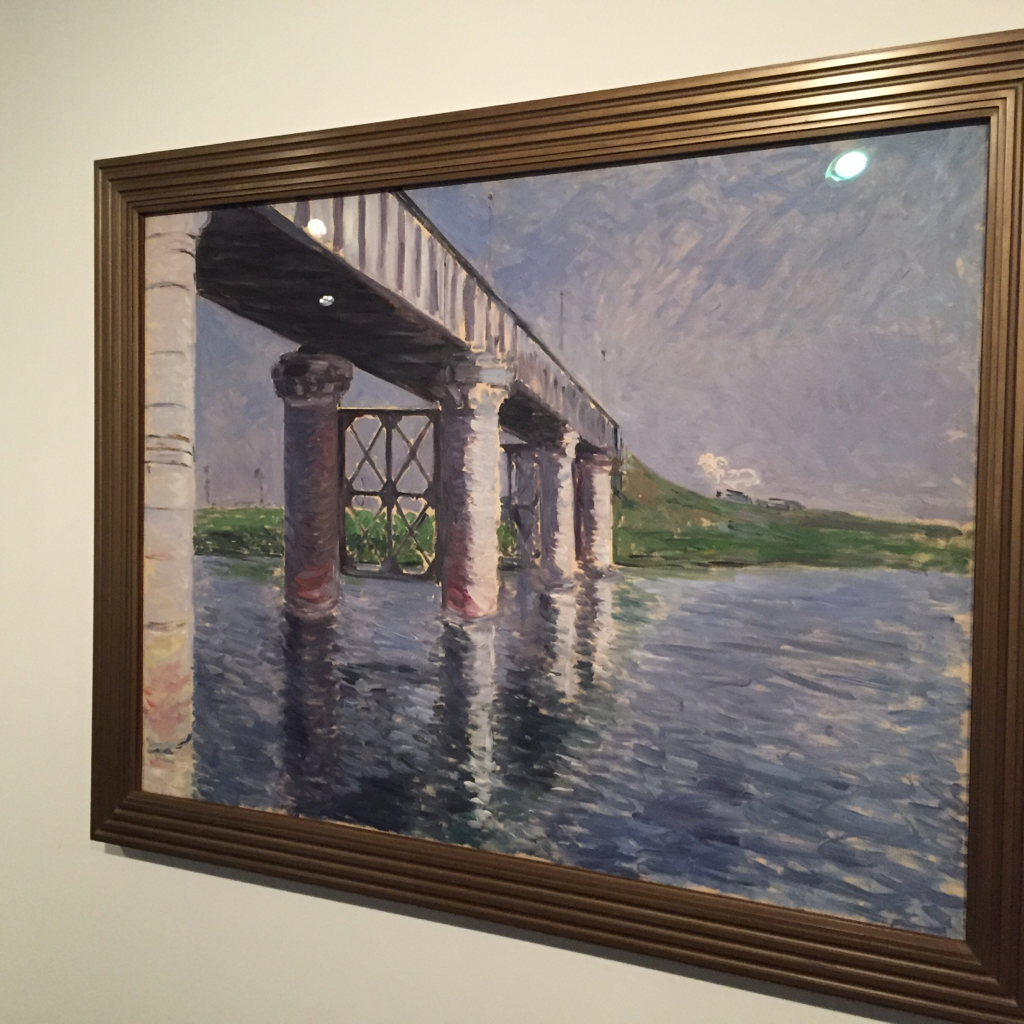Brooklyn Museum (original) (raw)
I see a lot of canvas. Is this incomplete? 
Interesting question. There is definitely some canvas showing through, but this work is not considered incomplete.
Impressionists and Post-Impressionists sometimes utilized the bare canvas as part of the composition. This technique is apparent in other works by Caillebotte.
This Caillebotte differs so much from others I’ve seen (like Paris Street Rainy Day, or the dudes carving his floors), what accounts for the stylistic change? 
This painting comes from a later period in his career, when Caillebotte was spending more time painting scenes in the countryside, along the Normandy coast and the Seine.
Like the painting of men planing his floor, Caillebotte is focusing on everyday, Realist subjects. In this case, a recently built industrial bridge.
To what extent was Caibotte considered successful in his own right in his life time? 
Caillebotte was born into a wealthy family, so he didn't worry too much about selling a lot of work. He even financially supported his artist friends and collected their works.
That said, he was invited by Degas to participate in the First Impressionist Exhibition in 1874 (though he declined to participate), and his work was reviewed favorably by critics at the time.
Thanks, so a modest success?
It would seem so, yes!
Gustave Caillebotte, why did he chose to leave blank space of canvas showing?
His concern in this painting was primarily with capturing the feeling of the place at that moment. This was likely just a stylistic choice on his part to enhance the feel of the scene, and it's light and color.
Thanks
Please tell me more about this artwork. 
Of course! Gustave Caillebotte rose to prominence with the Impressionist circle in Paris in the 1870s. This painting comes from a period after the dismantling of the Impressionists, when he was spending his time painting scenes along the Normandy coast and images of the Seine.
This subject was of particular interest for Impressionists, as it captures a locale where nature and modernity meet. Monet painted it as well!